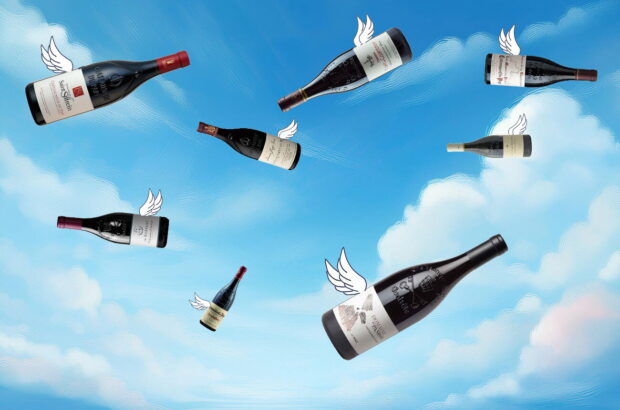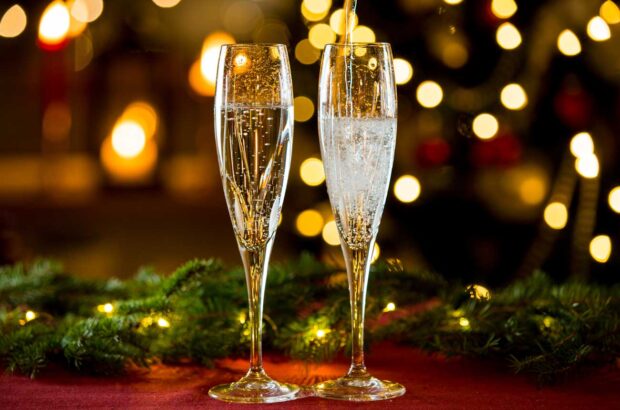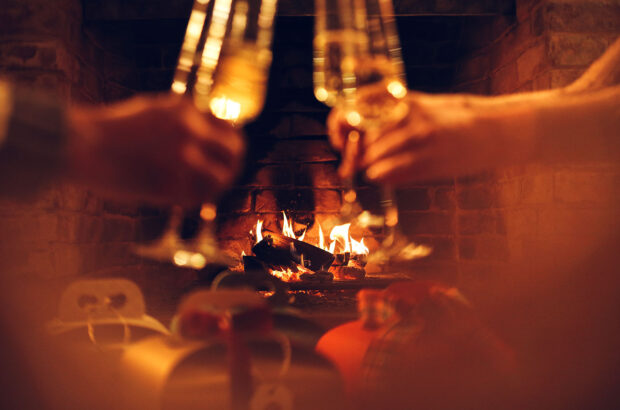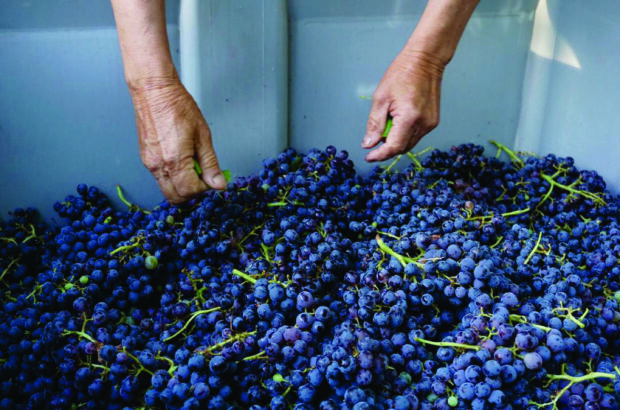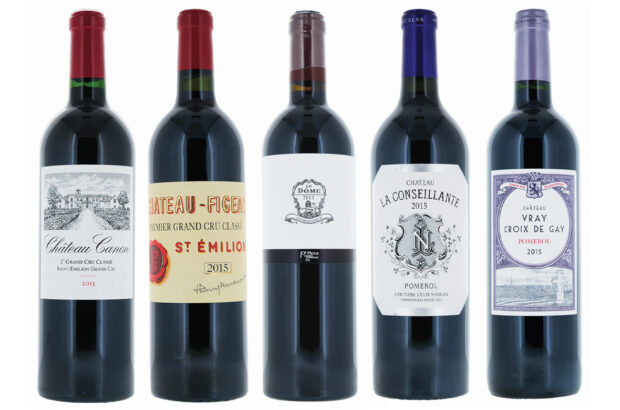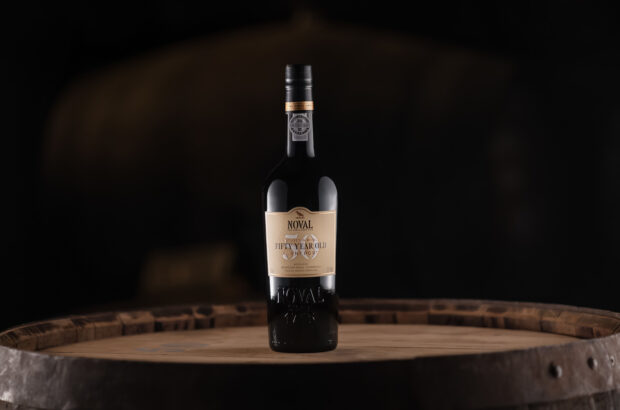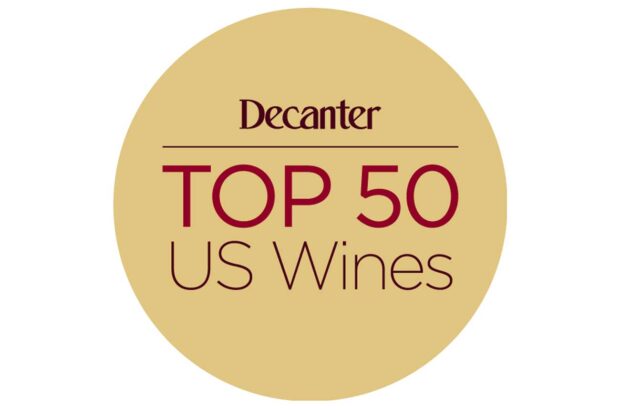- During the 1999 calendar year, a new winery opened in Washington State every 13 days.
- Washington, a leading supplier of quality Merlot, has earned its reputation largely because of this grape.
- The change in varietal mix speaks to the health of the industry and the growing demand for Washington State wines.
- Walla Walla is a good place to search for the ‘soul’ of Washington wine.
Want to hear something unbelievable? During the 1999 calendar year, a new winery opened in Washington State every 13 days. Whew! That is just one indicator of the enormous development that the Washington wine industry has seen in the past several years. This State, located just below the Canadian border in the Pacific Northwest region of the United States, ranks second in US premium wine production, after California.
In 1993 there were just 80 wineries in Washington, whereas the number has increased today to more than 145. Total vineyard coverage within Washington’s wine appellations more than doubled in the same period, from just over 4,453 hectares (ha) in 1993 to nearly 10,121ha in 1999. Even as I write this, Washington growers are busy planting some of the more than 800ha of new vines that are scheduled to go into the ground in the spring of this year along. Clearly, something big is happening in Washington State.
Merlot: the number one seller
A major factor in this surprising development is demand. Washington wine came of age just as many new wine drinkers – particularly those in the United States – discovered the joys and the benefits of daily wine consumption. The red wine of choice for many Americans became varietal Merlot, due to its approachable, quick-maturing style. According to recent statistics, Merlot is currently the number one seller in the United States. And Washington, a leading supplier of quality Merlot, has earned its reputation largely because of this grape.
John Abbott is winemaker at Canoe Ridge Vineyard in Walla Walla. He feels that, largely owing to the climate, Washington Merlots have an ‘old world’ character, with brighter fruit and more cleanly delineated lines than their California counterparts. ‘There’s no single style for Washington Merlot,’ he says, ‘but what you can say is that they will certainly have intense colour and excellent structure.’ Bob Betz, spokesman for Chateau Ste Michelle and a winemaker in his own right at Betz Cellars, says that Washington’s Merlot crafters are honing in on an ideal balance among four structural factors: more forward fruit, slightly lower acidity, higher alcohol, and firmer tannins. ‘We’re raising the bar higher and higher each year,’ he adds.
Even with the vast increase in acreage, however, Washington still can’t produce enough Merlot to meet consumer demand, and most of the State’s wineries are selling their wines on an allocation basis. After the new plantings are accounted for, Merlot, Cabernet Sauvignon and other red varieties cover 3,846ha of new vineyards, outnumbering white varieties for the first time since the last official census of Washington vines was conducted in 1993. The sea-change reflects a growing public awareness of and appreciation for red wine.
The Cabernet Sauvignon
Merlot is certainly high in the firmament in Washington, but there are other stars on the horizon, as well. The Cabernet Sauvignon made in the state is of high quality; it just isn’t as dazzling as the Merlot. Syrah, a current favourite for those seeking a change from Bordelais varietals, now represents 607ha in the state. This grape performs exceedingly well in the drier and warmer vineyards of eastern Washington’s Columbia Valley. Washington Cabernet Franc has also stepped into the limelight recently and will most likely continue to shine. And Washington vintners have also taken a liking to Lemberger (the German Limberger and Austrian Blaufränkisch).
Not exactly in line of succession to become the next Merlot, lemberger nevertheless results in very appealing and even stylish wines in Washington State.On the white side of the fence, Washington Chardonnays tend to be crisp and delicate, much like the apples that make the state’s farmlands famous. Sémillon, too, is made in both dry and late-harvest versions possessing ageworthy qualities. Best of all is the Riesling which produces classic, elegant wines in the State’s cooler regions.
Washington State Wine
As more vineyard land is planted and comes into production, Washington will undoubtedly remain on the cutting edge of developments in American wine. As Washington Wine Commission executive director Steve Burns puts it: ‘The change in varietal mix speaks to the health of the industry and the growing demand for Washington State wines.’
In Britain, on the other hand, Washington wine is still an unknown quantity. ‘These are excellent wines with a readily acceptable international style,’ says Simon Garrett of UK wine merchant Bibendum, ‘but they suffer the obvious disadvantage that Washington State has no recognised profile with the UK wine-drinker.’ Adventuresome restauranteurs may help rectify the situation by adding Washington wines to their lists, though the public at large still needs a little regional knowledge. ‘The private customer most likely to purchase a Washington label is one who is already familiar with California and Oregon wine,’ notes Garrett.
Washington’s wine industry is, in relative terms, quite new. The first plantings were made only after the dawn of the 20th century, between 1903 and 1909. Prohibition put a hasty clamp on the burgeoning industry, but by 1938, five years after repeal of Prohibition, there were already 42 wineries in the State. The industry continued to expand in the decades following, with an influx of oenological expertise from the likes of André Tschelistcheff. But most winemakers agree that the present is the most exciting period for Washington wine. ‘The boom is on,’ as one winemaker put it.
Geographically, much of eastern Washington (unlike the damp Puget Sound appellation on the Pacific Coast) is arid and sparsely populated rangeland. Winter freezes are a grower’s constant concern but, apart from that, irrigation from the Columbia River makes this country ideal for grape cultivation. With millions of arable acres still uncultivated in the State’s four existing appellations, Washington’s continuing expansion into a very bright future is virtually guaranteed. New appellations, such as the recently proposed Red Mountain, a distinct microclimate within the Yakima Valley, will surely be declared as growers and vintners gain further experience and knowledge of unique terroirs.
I spent a day flying across Washington’s wine country with Eric Rindal, owner of Waterbrook Winery. Private aviation is a popular pursuit here and Eric provided me an overview vineyard tour in his twin-engine Cessna, a perfect way to get a grip on this land of open spaces and great distances. The vast Columbia Valley stretches for hundreds of miles through central Washington.
The Yakima River, a tributary of the mighty Columbia, forms its own valley within the larger Columbia basin. And the yet smaller Walla Walla Valley is positioned eastward, south of the Snake River. As I gazed down on the many acres of wintery vineyards, it was exciting to think that these dormant vines would produce some of the America’s most thrilling wines.
The leading player, and by far the largest, on the Washington wine scene is Chateau Ste. Michelle. Owned by Stimson Lane, Ste Michelle has been the de facto doyenne of the Washington wine scene for years, garnering recognition from a national and international audience with its sizeable quality-oriented production. Directly across the street in Woodinville from Ste Michelle stands another of the State’s larger operations, Columbia Winery. Founded as Associated Vintners back in 1962 by several professors from the University of Washington. Columbia produces two explosive Syrahs, as well as an exceptional Bordeaux-style blend called Peninsula.
The Hogue Cellars is another of Washington’s larger producers. The family business began, and continues today, as a hop farm (about 80 per cent of US hops come from the Yakima Valley). Mike Hogue planted some experimental Riesling in 1974 and his early success encouraged him to go into commercial wine production. Having grown at a phenomenal rate, Hogue Cellars offers a full range of wines with a very attractive price-to-quality ratio.
In spite of their increasing numbers, most Washington wineries are comparatively minuscule operations. The flowering of high-quality, limited-production wineries in Washington seems have encouraged the elevation of some producers to cult status. Wines – particularly Merlots – from Andrew Will, DeLille, L’Ecole No 41, Leonetti, McCrea, Waterbrook and Woodward Canyon, to name several examples, are as desirable as they are scarce. Coming up fast are such Walla Walla producers as Bunchgrass, Dunham, Tamarack Cellars, Three Rivers, Walla Walla Vintners, and Glen Fiona, a producer of Syrah which was started by Rusty Figgins, brother of Leonetti’s Gary Figgins.
Many of these producers source grapes from Norm McKibben’s highly-regarded Pepper Bridge vineyard in Walla Walla. Norm gave me a bouncing tour of this sprawling vineyard in his pickup truck. The winery designated for each row of fruit is identified with a small, neat sign at the end of the row. I saw the names of almost all the important wineries of the region.
Walla Walla, is, in fact, a good place to search for the ‘soul’ of Washington wine. Except for one telltale contemporary icon – a Starbucks Coffee shop – the town centre seems not to have changed since the 1950s. But beneath the calm exterior, the place is a hotbed of winemaking on th edge. The Walla Walla Valley appellation now boasts more than 22 wineries and counting, a figure that has risen from just six in 1994. Local vintners are keen on sharing ideas and promoting their appellation. As John Abbott puts it, somewhat colloquially, ‘We’re trying to keep the hum on Walla Walla.’ Gary Figgins, owner of Leonetti Cellar and one of Walla Walla’s pioneer winemakers, expresses it even more succinctly: ‘We’re psyched!’
The ‘hum’ everywhere in the State is infectious, and outsiders are casting covetous eyes on Washington terroir. The highly regarded California-based Chalone Wine Group, which already owns Canoe Ridge Vineyard, is launching a new Washington brand called Sagelands later this year. Italy’s Marchesi Antinori went into partnership with Chateau Ste. Michelle to produce the first Col Solare, a proprietary red blend of Cabernet, Merlot and Syrah, in the1995 vintage. And, in the last year, Germany’s Ernst Loosen has also joined forces with Chateau Ste Michelle to produce a Columbia Valley Riesling. The 1999 vintage of which debuts under the Eroica brand this summer.
Can major French investment in Washington State be far behind? In fact, the French are already there. Christophe Baron for one, who grew up in the Champagne region, is now the proud owner of the three-year-old Cayuse Vineyards in Walla Walla. Baron’s rationale for coming to Washington was to find a place to ‘make wines in the style I grew up with’. That very clearly means French, and the dense, smoky and earthy Cayuse Syrah is a case in point. His compatriot, Marie-Eve Gilla, served her apprentice days in Burgundy working for Antonin Rodet. Now she is winemaker for Gordon Brothers in the Columbia Valley.
Considering the vast strides in quality that I’ve witnessed in these wines over the course of the past several years, it can’t be long before the wine world’s attention becomes firmly riveted on Washington. For the moment, however, as I sip these magnificent wines late into the night, I feel as if I am the privileged recipient of a secret that’s just waiting to be told.
For an overview of Washington’s many wineries, visit the Washington Wine Commission’s excellent website



